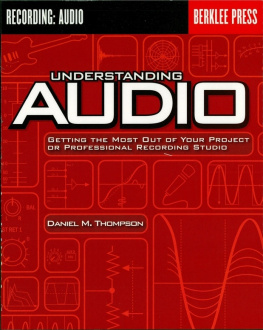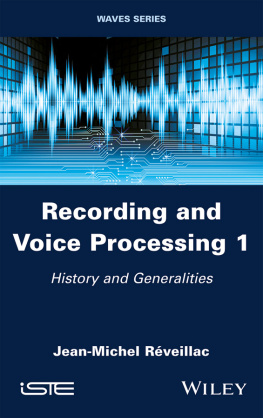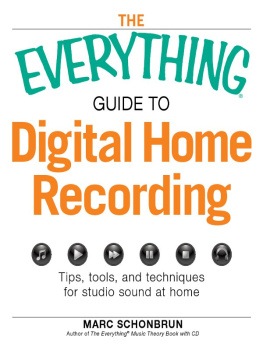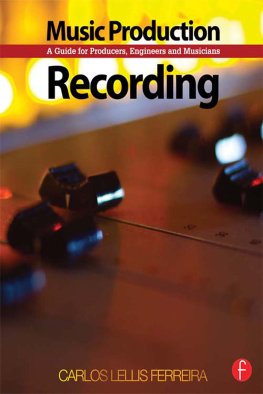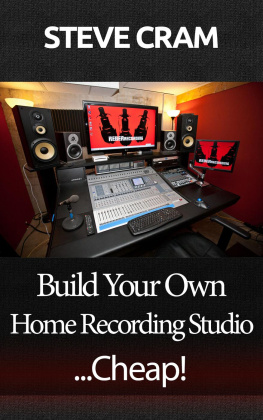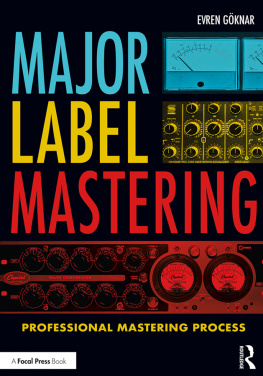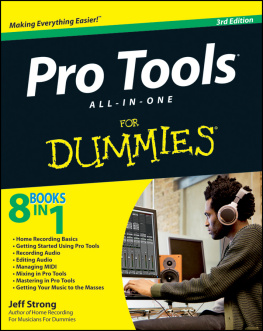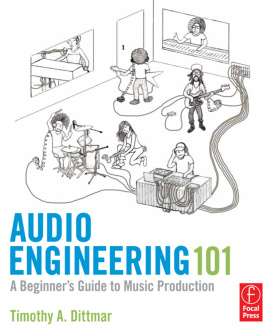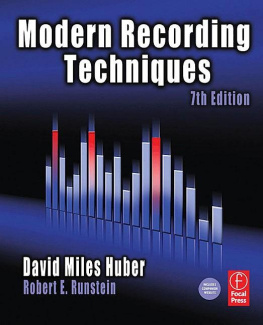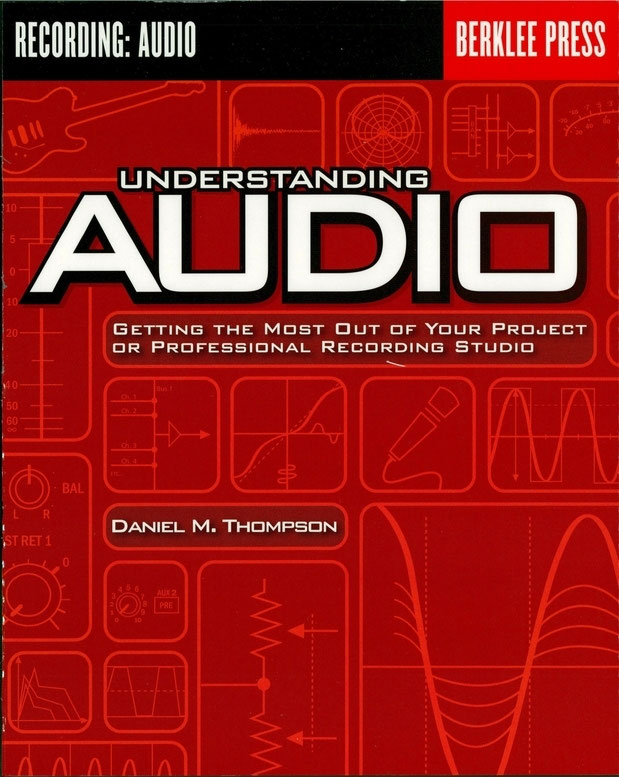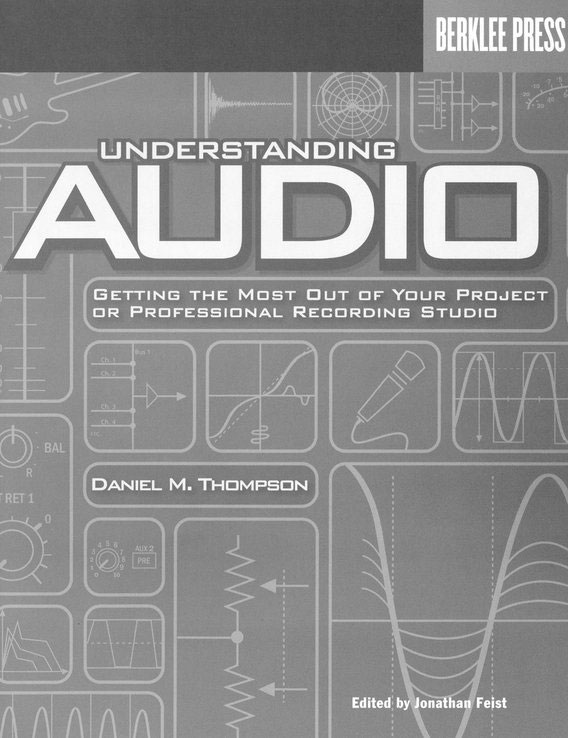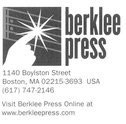Preface
It is a funny business that we are in, this music business. Whether producers, recording engineers, or recording musicians, our common bond is that we love music and we love recording music. We have come a long way from the days in which audio engineers wore lab coats, and musicians were not allowed to enter the control room. In part, we have artists like the Beatles to thank for that. By insisting on being involved in the technical aspects of the recording and production process, and by applying to it their own musical and artistic sensibilities, they, and countless other creative artists, producers, and engineers, helped give birth to a process that is eminently creative on both sides of the glass.
Since then, we have seen the advent of digital recording, MIDI, MDMs (modular digital multitracks), the project studio, hard-disk recording, desktop mastering, and home CD and DVD-burning. These developments have made music recording increasingly accessible to all.
But in the process of jumping into the audio soup, we often take it upon ourselves to know everything about everything related to making musiccomposition, songwriting, arranging, production, acoustics, recording engineering, mixing and mastering, and perhaps even marketing, sales, and distribution. In trying to do the job of ten people, it is easy for us to lose some fundamentals along the way. The intent of this book is to try to fill in some of those gaps in our understanding of audio and the recording process. This is not a book about recording techniques per sethere are several good titles currently available. It is also not a book about circuit design, architectural acoustics, or how to design, build, and operate your own studio, integrating MIDI, hard-disk recording, and analog multitrack tape with synchronization for video postproduction. However, if you plan to do any of these things, read this book first.
Understanding Audio explores the fundamentals of audio and acoustics that impact every stage of the music-making process. Whether you are a musician setting up your first Pro Tools project studio, or you are a seasoned professional recording engineer or producer eager to find one volume that will fill the gaps in your understanding of audio, this book is for you.
The intent of this text is to give anyone interested or involved in audio a thorough understanding of the underlying principles of sound, acoustics, psychoacoustics, and basic electronics, as well as recording studio and console signal flow. It is meant to be of use as a reference, but the topical flow should also allow the reader to proceed straight through, from beginning to end, and hopefully come out with a much deeper understanding of audio and how it relates to sound and the recording process.
Do not be put off by any of the mathematical formulae. They are included to deepen your understanding of the concepts being discussed, and are thoroughly explained and worked through to be accessible to even the uninitiated. We have attempted, to the extent possible, to include graphical representations of each of the concepts discussed. The old clich a picture is worth a thousand words certainly applies here, and the reader is strongly encouraged to take the time to understand each picture or graph; within them is encapsulated a wealth of information. We have also taken care to follow each topical discussion with practical studio applications, as well as occasional end-of-chapter problems to work through for additional reinforcement of concepts learned.
Where mathematical discussions are necessary, especially with respect to the decibel, we have tried to give the reader enough background and additional information to make the discussion accessible to all. Mathematics, as a language, has the advantage of being extremely succinct while simultaneously being capable of generalizing a truth to a broad range of possible situations. To take an extreme view, Lord Kelvin once wrote that until you can explain something mathematically, in numbers, your understanding of that concept is of a meager and unsatisfactory kind... [only] the beginning of knowledge. Food for thought.

